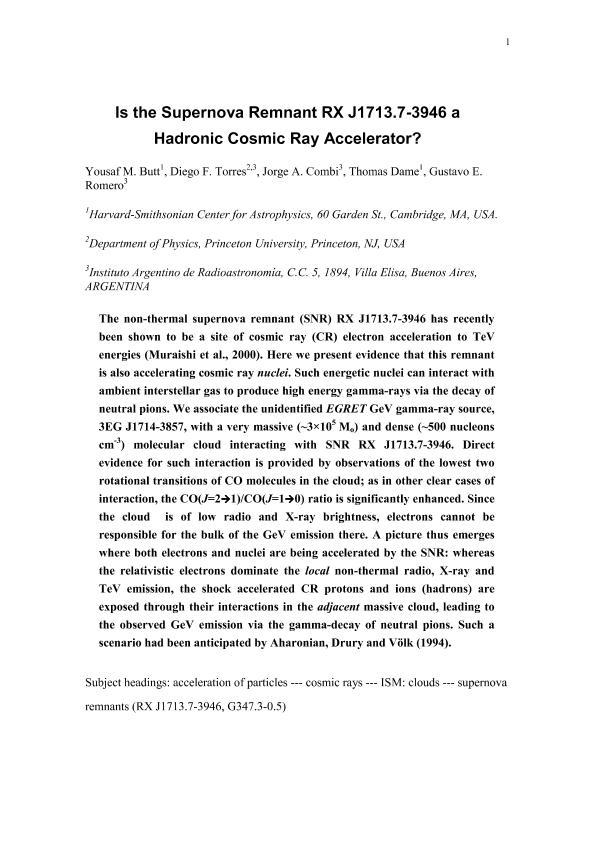Artículo
Is the supernova remnant RX J1713.7-3946 a hadronic cosmic-ray accelerator?
Fecha de publicación:
12/2001
Editorial:
IOP Publishing
Revista:
Astrophysical Journal
ISSN:
0004-637X
Idioma:
Inglés
Tipo de recurso:
Artículo publicado
Clasificación temática:
Resumen
The nonthermal supernova remnant (SNR) RX J1713.7-3946 has recently been shown to be a site of cosmic-ray (CR) electron acceleration to TeV energies. Here we present evidence that this remnant is also accelerating CR nuclei. Such energetic nuclei can interact with ambient interstellar gas to produce high-energy gamma rays via the decay of neutral pions. We associate the unidentified EGRET GeV gamma-ray source, 3EG J1714-3857, with a very massive (~3×105 Msolar) and dense (~500 nucleons cm-3) molecular cloud interacting with SNR RX J1713.7-3946. Direct evidence for such interaction is provided by observations of the lowest two rotational transitions of CO molecules in the cloud; as in other clear cases of interaction, the CO(J=2-->1)/CO(J=1-->0) ratio is significantly enhanced. Since the cloud is of low radio and X-ray brightness, electrons cannot be responsible for the bulk of the GeV emission there. A picture thus emerges in which both electrons and nuclei are being accelerated by the SNR: whereas the relativistic electrons dominate the local nonthermal radio, X-ray, and TeV emission, the shock-accelerated CR protons and ions (hadrons) are exposed through their interactions in the adjacent massive cloud, leading to the observed GeV emission via the gamma decay of neutral pions.
Archivos asociados
Licencia
Identificadores
Colecciones
Articulos(IAR)
Articulos de INST.ARG.DE RADIOASTRONOMIA (I)
Articulos de INST.ARG.DE RADIOASTRONOMIA (I)
Citación
Butt, Yousaf M.; Torres, Diego F.; Combi, Jorge Ariel; Dame, Thomas M.; Romero, Gustavo Esteban; Is the supernova remnant RX J1713.7-3946 a hadronic cosmic-ray accelerator?; IOP Publishing; Astrophysical Journal; 562; 2; 12-2001; L167-L171
Compartir
Altmétricas




